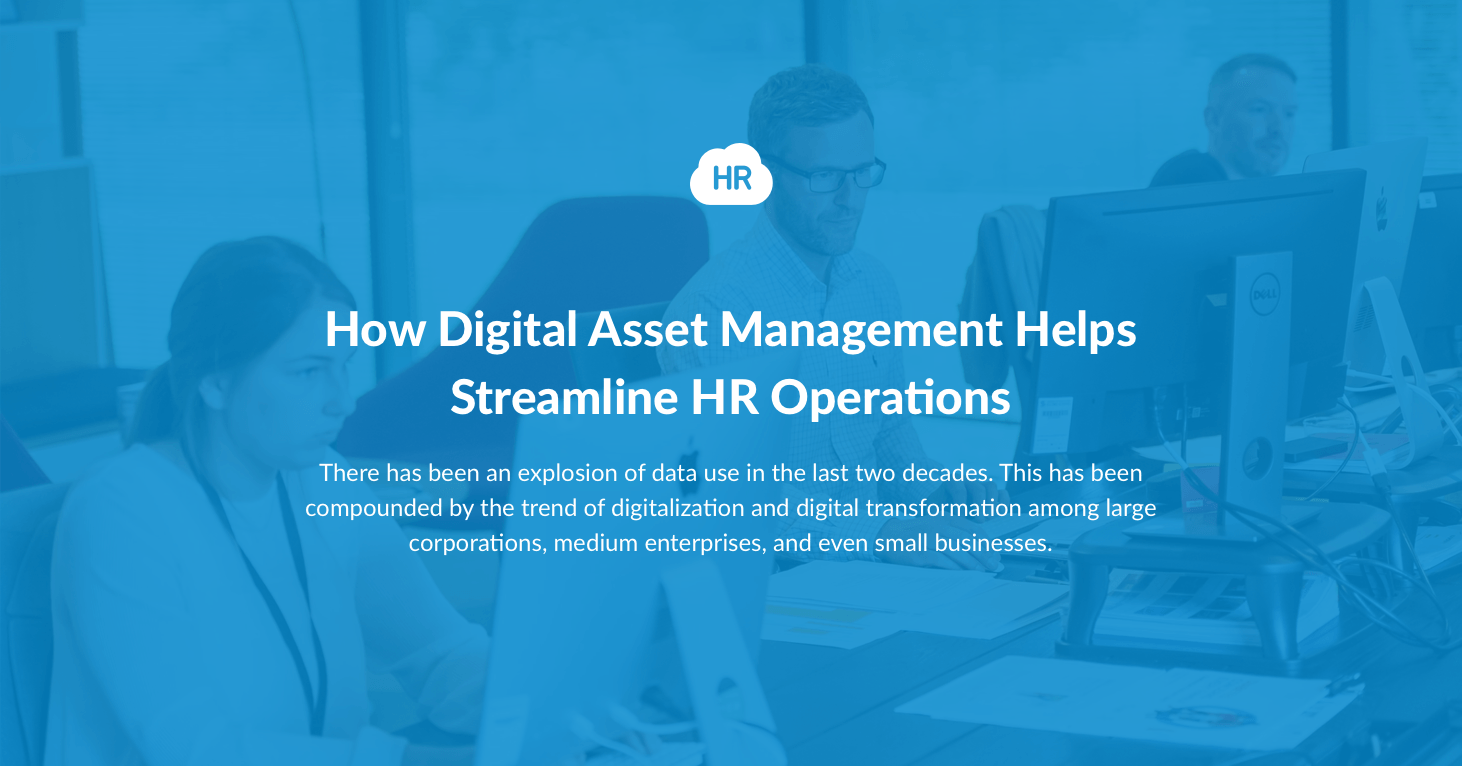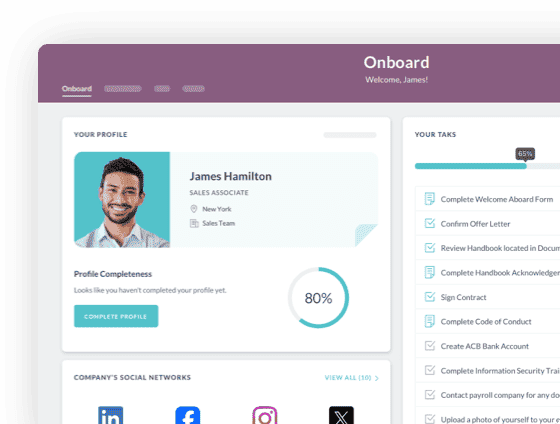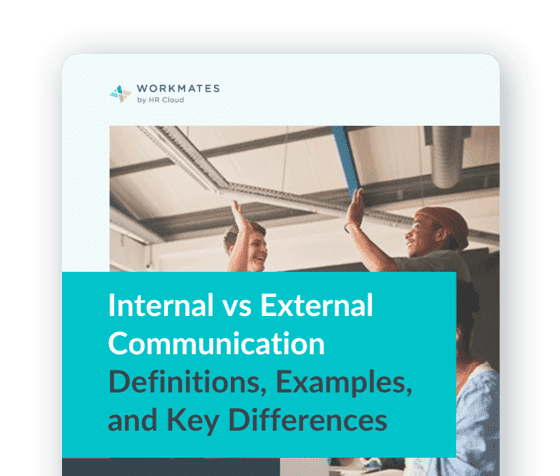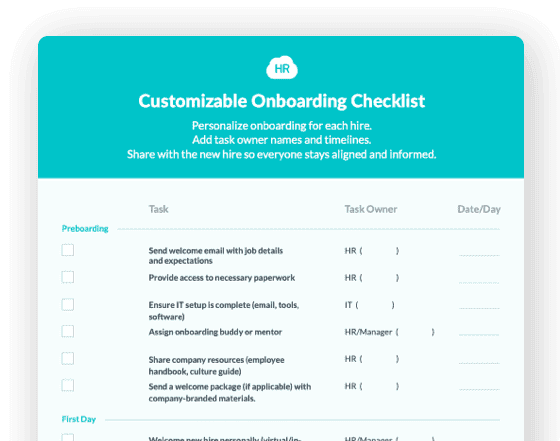How Digital Asset Management Helps Streamline HR Operations



 Cut onboarding time
by 60%—here's the
Ultimate Checklist
that helped do it.
Cut onboarding time
by 60%—here's the
Ultimate Checklist
that helped do it.

There has been an explosion of data use in the last two decades. This has been compounded by the trend of digitalization and digital transformation among large corporations, medium enterprises, and even small businesses.
As a result, it’s believed that more and more companies are finding themselves holding volumes of creative assets and rich media resources from their previous and current projects and campaigns. These are assets of the organization for which they spent thousands of hours of company time and thousands of dollars of project budget just to create them. These have remained dormant for lack of an enabling platform that can mobilize their potential to create value for the company.
They can still be used for other projects and campaigns to attract more leads, enhance brand reputation, draw more buyer interest, generate revenues, and the like. This has spurred the emergence of digital asset management among businesses to improve the way they organize and access files.
Overview Of Enterprise Digital Asset Management (DAM)
Digital Asset Management (DAM) platform solutions refer to the business practice of managing your digital files and other creative assets owned by the company. A digital asset management DAM system is a very cost effective way of handling your creative digital assets.
In the past, DAM was done in an asynchronous manner. This means that each team or department just saved and stored all the digital files and items that they created, on their own individual computers, which often impeded efficiency and productivity. At most, they were stored in shared team folders where everybody in the team can access them.
Digital assets refer to any kind of content that is created and produced by an individual or organization, which is used for its projects and other ongoing concerns. Here are some examples of creative digital assets:
-
Company logos and other brand logos;
-
Pictures and other images;
-
Animation files;
-
3D imaging files;
-
Videos and films;
-
PDF files;
-
Visual and proposal presentations; and
-
Text documents.
This worked quite well in the past. Team members were just given access permissions to the shared folders. When the teams got larger or more departments had to be involved in the project, the folders and files were stored in cloud-based servers.
Personnel who needed access to the folders and files were given access permissions to the cloud locations. This also worked well, especially for multinational companies where teams working on the same website or software development project could be spread out in different parts of the world.
Most of the time, nevertheless, these files were just stored away in folders after the completion of a project or campaign. This made some innovative companies rethink the way that they handle their creative assets and resources. Some of them thought that they could still reuse and repurpose some of the creative assets and resources that they produced in previous projects.
DAM platform or software systems have been developed to address the need of companies to manage their large volumes of creative assets and resources. A DAM solution enables your marketing teams to handle content management real time not only for a given type of digital assets. It also gives them version control over creative resources and enhances brand consistency in both traditional and social media marketing campaigns.
How Enterprise DAM Works
A DAM software system seeks to simplify and streamline the experience of its users, yet what happens within the software system is quite a complex process that involves several steps. Here are the various steps involved in the implementation of a DAM system:
-
Creation of digital assets and resources
The first step in the enterprise-level DAM is the creation and production of creative digital assets and resources. The usual example of this is the graphics artists of a company who come up with logo designs, marketing collaterals, and the like.
-
Indexing
After the creative assets and resources are produced, they’re then indexed by the DAM system. Indexing is the process of characterizing the metadata of the specific digital assets and resources created by the company’s teams. Some examples of metadata are the resolution of video files, image pixelation and resolutions, image dimensions, and others. Indexing is the foundation of the database management component of DAM systems.
-
Management
Management of digital assets refers to how the files would be sorted, classified, categorized, organized, and stored to make sure that people who need them would be able to find them where they’re supposed to be. This includes managing the levels of access and permissions to make sure that only those who need to use them would be given permission to access the servers and open the folders where they’ve been stored.
-
Publication And Distribution
Another important step in implementing a DAM system is the publishing and distribution of digital assets and resources. Without a DAM system, this is usually done by file transfers through email and messaging applications. But in a DAM system, folders and files are shared by simply giving the users who need to view and edit them the right level of access permissions.
-
Preservation
The final step in the implementation lifecycle of a DAM system is the preservation of the digital assets and resources. DAM system specialists also call this step the archiving process to manage your digital assets. The DAM system allows your teams to store digital assets which are no longer being used in a way that would help you save storage space.
How DAM System Streamlines HR Operations
Systems like a digital asset management platform and the like have a huge impact on human resources (HR) operations because of the comprehensive scope and extent of the system’s applications and functionalities. Here are some of the known benefits of digital asset management or how a DAM system is able to streamline the operations of HR departments:
-
DAM System Streamlines Employee Onboarding
One of the most important impacts of a DAM system on the HR operations of a company is that it streamlines file management. A DAM system provides the company with a powerful system for managing its voluminous files, including its creative digital assets and resources.
From the point of view of HR departments, this capability streamlines their task of provisioning and monitoring the compliance of employees with the level of permissions and restrictions on access to servers and files.
Keep in mind that the access permissions of a company’s numerous employees are often connected with their employment status, role, and functions in the company. The role that they applied for, and were onboarded to, determines the level of their access to the different servers, folders, and files in the DAM system. The different roles and functions in the company’s staffing plan and pattern would of course correspond to different levels of access permissions.
Without a DAM system, HR would have to manually ascertain what kinds of permissions can be given to a certain employee. The information technology (IT) department might have to ask them from time to time whether a certain employee could be given access permissions to sensitive or confidential creative digital assets that might be above their paygrade.
But with a DAM system, HR and IT would only have to collaborate on the levels of access permissions that can be given to each corresponding role and function in the staffing pattern. IT can then automate the provisioning of access permissions based on what HR said could be granted to the employees concerned.
Of course, there will still be those requests for exceptions and special cases from time to time. But generally, the effect is that the DAM system would streamline the tasks of HR in identifying the access levels of all roles in the staffing plan.
-
DAM System Streamlines Remote Work Collaboration
Another important impact of digital asset management solutions implementation is that it streamlines the arrangements for remote work coordination and collaboration.
With the onset of the new normal, it’s said that more businesses and organizations have realized that there’s no going back completely to the ways of doing things before the global pandemic happened. Both companies and their clients have realized the value of allowing at least some of their employees to continue working remotely for good.
This has been allowed by some corporations in the past even before the pandemic but not without challenges and difficulties in business operations. For one, remote work posed difficulties in how to grant access permissions to employees who needed to access creative digital assets and resources from their remote work station.
Organizations with cloud-based servers were able to overcome this challenge by storing the folders needed in their cloud servers and giving access to their remote teams and workers. Yet this setup also encountered difficulties when the files were ‘too heavy’ to be downloaded or uploaded to and from the cloud servers. This also posed challenges when teams and workers had to share and collaborate and the files were too large.
Implementing a digital asset management system streamlines work collaboration because all the creative digital assets and resources that workers need can be found in the central database and library of the DAM system. It doesn’t matter whether onsite or remote workers need to access it. As long as they have access to the DAM system, they would be able to access the digital assets and resources that they need wherever they’re located.
This streamlines further the HR operations of the company. Remote work would now be enabled to have the same access and capabilities as onsite work. HR doesn’t have to reclassify workers’ access whenever they change the environment from onsite to remote.
As long as the employee can hook up to the DAM system, they’re good to go. This also makes it convenient for external consultants, affiliates, and contractors who aren’t part of the regular staffing plan but would need to have access to some of the project’s creative digital resources.
-
DAM System Streamlines HR Programs To Stimulate Creativity
Another important impact of implementing a DAM system is that it streamlines and in fact multiplies all HR programs aimed at stimulating creativity among the company’s employees. This is perhaps one of the most important effects of a DAM system on any business or organization.
Implementing a DAM system will not only stimulate and unleash the creativity of a company’s workforce. It will also spark a synergy of the workforce creativity with the integrated power of their repository of creative assets and resources.
In other words, the employees would become more creative because they can access creative assets anytime anywhere. Not only that, but the workers would also multiply the creative power of a company’s digital assets because they’re going to make use of them more often, and they’re going to make the most of them.
Conclusion
Implementing a DAM system would undoubtedly have a positive impact on the workflow and operations, especially of enterprise-level organizations. But equally important is that it’ll have a positive impact on efforts to streamline HR operations. It’ll definitely streamline the onboarding process of assigning the corresponding access permissions for each role and function. Also, the use of DAM will enhance remote work collaboration and synergize creativity among employees.
Author Bio: This article is written by our marketing team at HR Cloud. HR Cloud is dedicated to providing powerful solutions for your HR teams and creating an exceptional employee experience. Our aim is to help your company improve employee engagement, onboarding, and to save you valuable time!
Keep Reading
45 Boss Day Messages That Actually Mean Something (2026 Guide)
When is Boss Day 2026? Mark your calendar for October 16, 2026 — the annual opportunity
Birthday Wishes for Coworkers: 50+ Messages That Build Workplace Connection
A coworker's birthday isn't just another calendar date—it's a meaningful opportunity to
Embracing Diversity: Recognizing Different Cultures in the Workplace
Workplaces today reflect the incredible diversity of the world around us. People bring
Like What You Hear?
We'd love to chat with you more about how HR Cloud® can support your business's HR needs. Book Your Free Demo

Build a Culture of Recognition. Boost Engagement. Guaranteed.
Workmates empowers employees to stay informed, connected, and appreciated—whether they’re on the front line, in the office, or remote. Recognition drives 12x higher engagement.Trusted by industry leaders in every sector




Cut Onboarding Costs by 60%.
Take the confusion and follow-ups out of onboarding with automated workflows, digital forms, and structured portals—so new hires ramp faster 3X quicker.Trusted by industry leaders in every sector




